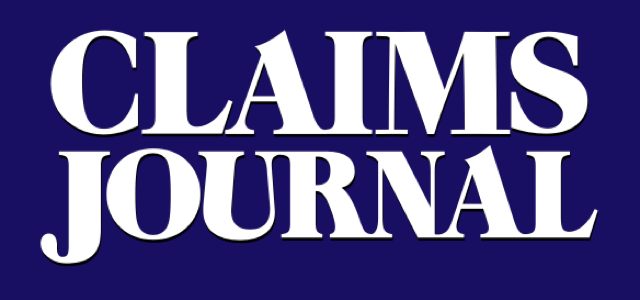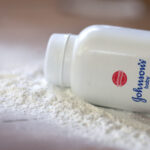Erie Indemnity Company in Erie, Pa., reported a 14.4 percent drop in net income to $49.5 million for the first quarter, a decline it attributed to costs of operations outpacing revenue growth, but officials said there were favorable indications in the period that its management strategy of being a low cost provider is working.
The company said it is continuing to lower its prices to compete. Direct written premiums of the property and casualty group declined 3.0 percent during the quarter, a trend management expects to continue throughout the year as price reductions go into effect. The company anticipates that its pricing actions will reduce direct written premiums by $114.6 million for the year, of which approximately $26.8 million occurred in the first quarter.
Net income per share decreased to $.73 per share, compared to $.83 per share in the comparable quarter for 2005. Management fee revenue grew by 1.1 percent to $232.9 million, up from $230.4 million for the same period one year ago, but the property and casualty group’s direct written premium declined 3.0 percent to $942.8 million
New written premium increased 3.3 percent.
The property and casualty adjusted combined ratio was 82.3 percent, compared to 81.4 percent a year earlier. The company’s reported GAAP combined ratio was 86.5 percent, yielding an underwriting gain of $7.3 million for the first quarter 2006 compared to an underwriting gain of $6.2 million in the first quarter of 2005.
“There were several favorable indications during the first quarter that suggest our strategy is beginning to take hold,” noted Jeffrey A. Ludrof, president and chief executive officer of Erie Indemnity Company.
“Our rate interactions began to favorably impact business growth, with slight improvement in our total number of policies in force and retention ratio and an increase in new written premium. We have also sustained our favorable underwriting profitability trend as the GAAP combined ratio of the Erie Indemnity Company reported an underwriting gain from insurance underwriting operations of $7.3 million for the quarter. These are all positive steps, but there is still much work to be done.”
Ludrof said the company is aiming to manage its costs during 2006. “Our business model is predicated upon being a low-cost insurance provider,” Ludrof noted. “This has been historically a distinct competitive advantage for us, enabling Erie to pass competitive rates onto our policyholders. While enhancing our competitive position we are also focusing on cost management, boosting employee productivity and managing expenses. Our goal for 2006 is to hold non-commission operating expenses to an increase of 6 percent over 2005 for the entire Erie group of companies. In Erie Indemnity Company our goal is to limit our increase in non-commission expenses over last year to 9 percent.”
Management operations
During the first quarter, management fee revenue increased by 1.1 percent to $232.9 million for the quarter ended March 31, 2006. The higher management fee rate in 2006 of 24.75 percent resulted in $9.4 million more in management fee revenue for the quarter ended March 31, 2006, or an increase in net income of $.09 per share-diluted. The management fee rate was 23.75 percent in the first quarter of 2005.
The direct written premiums of the property and casualty group, upon which management fee revenue is calculated, totaled $942.8 million in the first quarter 2006, compared to $971.8 million in the first quarter 2005, a 3.0 percent decline. New written premium increased 3.3 percent, to $86.6 million at March 31, 2006 compared to $83.8 million at March 31, 2005. Year-over-year policies in force increased 0.1 percent at March 31, 2006.
The year-over-year average written premium per policy declined by 2.1 percent to $1,044 at March 31, 2006, as compared to $1,066 at March 31, 2005. The decline is a result of rate reductions and several new rate interactions, including segmented pricing, a safe driver discount, a new multi-policy discount associated with life insurance purchases and a new payment plan discount. Year-over-year personal lines premium decreased 4.5 percent, while commercial lines remained flat at March 31, 2006. The year-over-year policy retention rate improved to 88.8 percent at March 31, 2006, from 88.3 percent at March 31, 2005.
Pricing actions and estimates approved, filed and contemplated for filing during 2006 are anticipated to reduce direct written premiums by $114.6 million, of which approximately $26.8 million occurred in the first quarter of 2006. Included in the total 2006 reduced premiums is $35.3 million related to the carryover impact of pricing actions approved and effective in 2005. These pricing actions are being implemented to further enhance the competitive position of Erie products.
The cost of management operations increased 9.1 percent to $193.8 million in the first quarter of 2006, from $177.7 million for the same period in 2005. Commission costs increased 6.3 percent to $134.1 million, from $126.2 million in the first quarter 2005. An increase in agent bonus expense of $9.5 million resulting from the improvements in underwriting profitability impacted commission costs for the first quarter of 2006.
First quarter costs of management operations within Erie Indemnity Company, excluding commissions, increased 15.9 percent to $59.7 million in 2006 from $51.5 million in 2005. Personnel costs increased 15.3 percent as a result of higher average pay rates and higher estimates of future payouts for management incentive plans that were influenced by the significant improvement in the company’s underwriting profitability over the past three years. The cost of using insurance scoring on all new and renewal business also impacted other operating costs and totaled $1.0 million in the first quarter of 2006 compared to $0.5 million in the first quarter of 2005. Insurance scoring was initially used for pricing purposes in March 2005 for new business and in April 2005 for renewal business. The first quarter of 2006 includes a full quarter’s expense for insurance scoring on new and renewal business.
According to Ludrof, maintaining a low-cost position within the industry is essential to enhancing Erie’s competitiveness, remaining attractive to the company’s agency distribution system and producing revenue growth. The company has developed a plan to control non-commission expense levels of the Erie Group of companies in 2006 to a 6.0 percent increase over 2005 operating expense. For the company that translates to an increase in non-commission management expenses of 9.0 percent. The company’s cost management plan also calls for a strategic review of functional expenses and for balancing workforce requirements with business needs.
Insurance underwriting operations
The company’s insurance underwriting operations recorded gains of $7.3 million in the first quarter of 2006 compared to $6.2 million in the first quarter of 2005. Its share of catastrophe losses totaled $0.3 million for the three-month periods ended March 31, 2006 and 2005. The GAAP combined ratio for the company in the first quarter 2006 was 86.5 compared to 88.4 for the same period in 2005.
The adjusted statutory combined ratio for the property and casualty operations was 82.3, compared to 81.4 for the first quarter 2005. Continued favorable development of losses on prior years, excluding salvage and subrogation recoveries, improved the group’s combined ratio by 7.9 points in the first quarter of 2006 and 4.9 points in the first quarter of 2005. The first quarter of the year typically has the lowest non-catastrophe loss results of the year. Catastrophe losses incurred were not significant and therefore the lower claim volume, coupled with improving underwriting, resulted in seasonally low losses for the quarter ended March 31, 2006. Underwriting losses are seasonally higher in the second and fourth quarters and as a consequence, the company’s property/casualty combined ratio generally increases as the year progresses.
In the first quarter of 2006, the company’s share of the reduction to incurred but not reported reserves related to seasonality adjustments was $2.3 million, compared to $2.7 million in the first quarter of 2005. Catastrophe losses resulted in a 0.6 point increase in the first quarter statutory combined ratio of the Property and Casualty Group compared to 0.5 points in catastrophe losses for the same period in 2005. These first quarter amounts are below the property and casualty group’s historical norm for catastrophe losses. The 10- year historical average of catastrophe losses has contributed 3.0 percentage points to the group’s statutory combined ratio on an annual basis.
In April the company announced it would cease development of ERIEConnection, a personal lines policy administration and Web-based agency interface system. As a result, the company incurred a charge to net income of about $1.3 million or $.02 per share in the quarter ended March 31, 2006.
Investment operations
Net revenue from investment operations for the first quarter of 2006 reflects a decrease of 9.9 percent to $20.6 million, compared to $22.8 million for the same period in 2005.
Dividends paid to shareholders totaled $22.2 million in the first quarter of 2006 and $20.6 million in the first quarter of 2005.
Erie Indemnity Company provides management services to the member companies of the Erie Insurance Group, which includes the Erie Insurance Exchange, Flagship City Insurance Company, Erie Insurance Company, Erie Insurance Property and Casualty Company, Erie Insurance Company of New York and Erie Family Life Insurance Company.
According to A.M. Best Company, Erie Insurance Group, is the 15th largest automobile insurer in the United States based on direct premiums written and the 22nd largest property/casualty insurer in the United States based on total lines net premium written. The Group, rated A+ (Superior) by A.M. Best Company, has almost 3.8 million policies in force and operates in 11 states and the District of Columbia.
Source: Erie Indemnity Company
Was this article valuable?
Here are more articles you may enjoy.

 J&J Talc Jury Awards $1.56 Billion to Asbestos Cancer Victim
J&J Talc Jury Awards $1.56 Billion to Asbestos Cancer Victim  NYT Asks Judge to Dismiss Trump’s ‘Implausible’ Defamation Suit
NYT Asks Judge to Dismiss Trump’s ‘Implausible’ Defamation Suit  Tesla Drivers Are Buying Escape Tools and Cars to Avoid Getting Trapped Inside
Tesla Drivers Are Buying Escape Tools and Cars to Avoid Getting Trapped Inside  Rare Weather Warning Issued as Strong Gusts Fuel Colorado Wildfire Threats
Rare Weather Warning Issued as Strong Gusts Fuel Colorado Wildfire Threats 